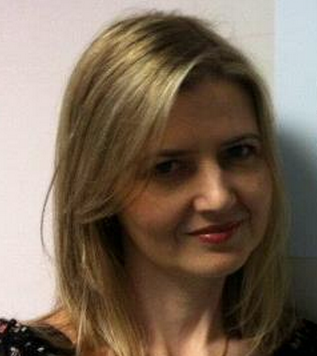
The Music of Words upon Words
– Malu Sciamarelli
My first contact with poems, stories and literature was when I was a small child. I remember my father reading and listening to music in a cozy living room in the evenings. I knew I could not read those books – “they are not for children”- he would tell me, but the inspiring music, and the words my father would keep his eyes on fascinated me so much, that I would secretly get those books and take them to my bedroom. I would put them together with my school-books, and read them in the school garden, when most children would only want to play. These books and the beautiful words they had, inspired me to find my own creativity and write my own stories and poems.
I still read books in the garden today. It is a perfect environment to read, listen to the music created by the sounds of nature and express my own creativity. It is also a place where I teach some Creative Writing classes. It is a free environment where my students are motivated to do things differently and feel confident to risk contributing fully. They can find their own creativity and express themselves through reading and writing.
Recently, I have been introducing not only reading to my Creative Writing classes, but also music. I have been trying to make a connection among writing, reading and hearing, in which the writer is not only a person who writes but becomes a person who hears. “Hearing” a written text means reading it in order to capture what passes between the lines, like the form and design of intonation. During silent reading, a world is awakened by the vibrations of the words’ sounds and images. But it also means the moment when the writer “hears” the words and writes them.
To introduce this experiment in my classes, and motivate my students to “hear” the text, I will share now the first set of activities I carried out with them.
I first brought a poem by Augusto de Campos, a Brazilian poet and writer. “O Pulsar” (“The Pulsar”) is a poem in the form of a telegram from the stars. The words of the poem appear in white on a black background with two letters transformed into patterns: the “o” is a small white solar circle, and the “e” is replaced by the image of a star, acting as “punti luminosi”. The poem asks the reader to open the window and see the near-mute pulsar.

We first read the original version in Portuguese, and then in English:
“Wherever you are
On Mars or in Eldorado
Open the window and see
The near-mute pulsar
A light-year embrace
That no sun warms
And that the dark echo forgets”
Immediately after reading the poem written on paper, we listen to it in the form of music, set by Caetano Veloso, a Brazilian musician and poet, accentuating the connection I have been trying to make.
After this first class, my students were asked to go home, and in the evening, open their windows, look at the stars and write a brief description of what they could hear and/or see. They all brought their texts to the next class, when they read them in turn. After each student read their text, we stopped and discussed what the others could see/hear in that text. All the perceptions were different – the images, the sounds, the meanings. Again, they were asked to take their texts home, open the window, look at the stars and read their texts. They could either keep them the way it was written, or change them.
In the next class, when they brought their second draft, and again we read them in turn, all the texts changed and so did their perceptions. After this experience, I could see “the fictional text as a closed music box that pulsates and reverberates what is experienced and what it thought in a written form that resounds anew with each rereading, recuperating what has been lost while also spreading new resonances into the future each time it is opened.” (Marilia Librandi-Rocha).
What do my experience of reading and writing in the garden, and these classes with my students show about creative writing? There are surely many points to explore, but I would highlight three main points:
1. Creative Writing is personal writing where the purpose is to express thoughts, feelings and emotions. It is expressed in an imaginative, unique and sometimes poetic way. If it is imaginative and unique, any attempt to reduce the teaching of creative writing to a system or set of formulas, with prescribed techniques and practices should be avoided.
2. It is important to establish a creative environment, be it a beautiful garden, a book or library corner, or a circle of chairs in the classroom, where ideas and thoughts are expressed freely and where students learn that collaboration is better than isolation. They will feel comfortable and motivated to explore their own writing, and so will discover their strengths and weaknesses.
3. As for teachers, an understanding of the characteristics of effective writing and the strategies used by successful writers is not enough. The creative writing teacher should be a constant investigator of the learners’ creativity, and also use their experience as writers, as a basis for creating new practices and activities and face the challenges that teaching creative writing involves.

References:
Campos, Augusto de. (1994). Despoesia. São Paulo, Editora Perspectiva.
Dunn, Christopher. (2001) Brutality Garden: Tropicália and the Emergence of a Brazilian Counterculture. Chapel Hill, U of North Carolina.
Richards, Jack C. (1999). The Language Teaching Matrix. (7th ed.). Cambridge University Press.


Thanks Malu for sharing your beautiful experiences.